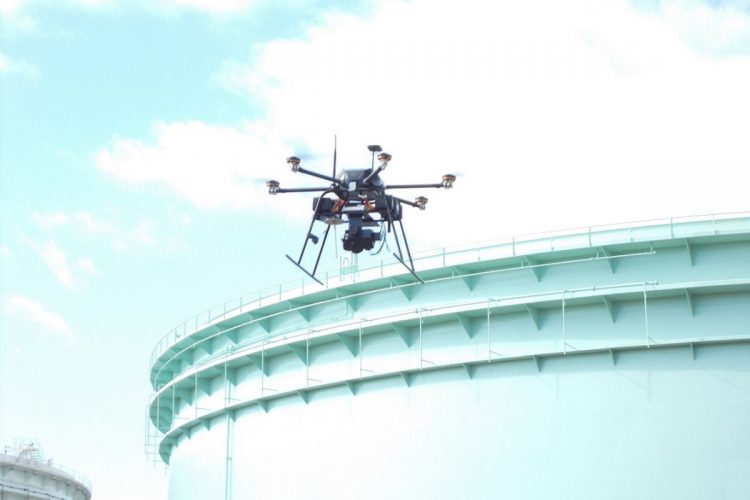03/13/2020
Digital tech opens up plants’ future
Drones, AI, sensors help preservation of aging petrochemical plants

There are growing moves to use digital technology to maintain and manage Japan’s aging oil refineries and petrochemical plants.
About a half century has passed since many of these plants, which supported the country’s economic growth, went into operation. The veteran baby boomers who have supported their operations until now are reaching retirement age.
As these important facilities are in an urgent need of measures to ensure safety and improve profitability, operators are increasingly turning to the “internet of things,” artificial intelligence (AI), drones and other cutting-edge technologies to help address their maintenance needs as powerful tools.
Profitable, yet safe
Drones fly the skies over the plant. Image data is accumulated, collected from high above and inside facilities, where visual inspection is difficult. Sensors installed on some equipment regularly collect and monitor information such as temperature and vibration. AI systems analyze this data for inspection and trouble detection purposes.
A new service of detecting anomalies in pipelines from noise or the speed of corrosion, as well as new concepts, such as the “digital twin” where the data of an actual plant and those of a virtual plant on a computer are linked, have been created. This is the new high-tech normal of equipment maintenance.
The tide of digitalization is sweeping over traditional facilities. This comes at a time when it has become more difficult to ensure the safety of plants while at the same time improving their productivity.

As equipment ages, man hours required for maintenance and inspection work increase, but the number of workers operating plants or ensuring their safety are decreasing. Operating a plant for longer without interruption helps enhance profitability because companies can avoid missing manufacturing opportunities. However, if this situation continues, it becomes difficult to not only maintain or improve productivity, but also ensure safety.
Structural changes surrounding plants and innovations in digital technology have driven moves to look at equipment maintenance from a fresh angle and the ongoing shift to the digital transformation strategy, which adds new value to existing businesses.
Responding to new needs
There are now plant operators who have adopted top-down management strategies, instead of simply leaving operational improvement to plant staff. More prominent these days, however, are moves where the growth of new types of equipment maintenance needs is regarded as a business opportunity.
For instance, an increasing number of companies in other industries, not just conventional equipment makers and engineering companies, are entering this area. There is also growing moves for companies to collaborate in projects involving internet of things technology at their plants.
Startups with unique know-how in areas such as sensors and big data analytics are emerging as key players in the field of smart maintenance and are increasingly making their presence felt.


